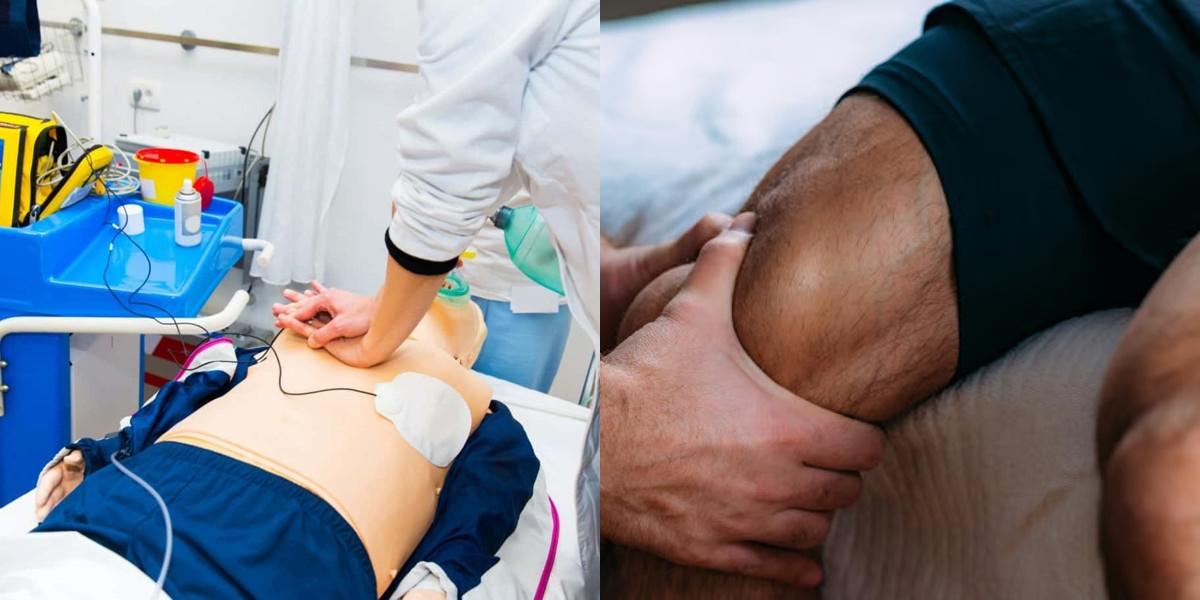ACLS vs Massage Therapist

When it comes to choosing a career path, there are endless options to consider. Two popular vocational training choices are becoming an Advanced Cardiovascular Life Support (ACLS) provider or a Massage Therapist. Both careers offer unique opportunities to make a positive impact on people's lives, but they differ in terms of job description, education and training requirements, and career outlook and salary. In this blog post, we will explore the similarities and differences between these two paths to help you decide which one is the best fit for you.
Article continues after recommendations
Recommended for you
What is ACLS?
ACLS stands for Advanced Cardiovascular Life Support. It is a specialized training program designed to equip healthcare professionals with the knowledge and skills necessary to respond to cardiovascular emergencies. ACLS providers are trained to assess and manage life-threatening cardiac conditions, such as heart attacks and strokes. They are often part of a resuscitation team and play a crucial role in saving lives.
What is a Massage Therapist?
A Massage Therapist is a healthcare professional who specializes in providing therapeutic massage treatments to clients. They use various techniques to manipulate the soft tissues of the body, including muscles, tendons, and ligaments, to promote relaxation, relieve pain, and improve overall well-being. Massage Therapists work in a variety of settings, including spas, wellness centers, hospitals, and private practices.
Difference between ACLS and Massage Therapist
While both ACLS and Massage Therapists work in healthcare settings and have the opportunity to help people, there are several key differences between these two professions:
-
Job Focus: ACLS providers focus on emergency cardiovascular care and are often part of a resuscitation team. They are trained to respond to life-threatening situations and provide immediate medical interventions. Massage Therapists, on the other hand, focus on providing therapeutic massage treatments to promote relaxation, pain relief, and overall well-being.
-
Scope of Practice: ACLS providers are trained to perform advanced medical interventions, such as administering medications, performing advanced airway management, and using defibrillators. Massage Therapists, on the other hand, are trained in various massage techniques, such as Swedish massage, deep tissue massage, and sports massage.
-
Work Environment: ACLS providers typically work in hospitals, emergency departments, and other healthcare settings. They may be required to work long hours and be on-call. Massage Therapists, on the other hand, have more flexibility in terms of work environment. They can work in spas, wellness centers, cruise ships, or even start their own private practice.
ACLS vs Massage Therapist: Job Description
The job descriptions of ACLS providers and Massage Therapists differ significantly:
-
ACLS provider:
- Assess and manage life-threatening cardiac conditions
- Administer medications and perform advanced medical interventions
- Collaborate with a resuscitation team to save lives
- Stay up-to-date with the latest advancements in cardiovascular care
-
Massage Therapist:
- Perform therapeutic massage treatments to promote relaxation, pain relief, and overall well-being
- Assess clients' needs and develop personalized treatment plans
- Maintain proper hygiene and cleanliness in the work environment
- Educate clients on self-care techniques and recommend exercises or stretches
Article continues after recommendations
ACLS vs Massage Therapist: Education and Training
The education and training requirements for ACLS providers and Massage Therapists also differ:
-
ACLS provider:
- Education: ACLS training is typically offered to healthcare professionals, such as doctors, nurses, and paramedics. These professionals must have prior medical training and certification.
- Training: ACLS training is a specialized program that includes classroom instruction, hands-on practice, and a final examination. The training focuses on advanced cardiac life support algorithms, emergency pharmacology, and team dynamics.
-
Massage Therapist:
- Education: Massage Therapists are required to complete a formal training program at an accredited massage therapy school. These programs typically range from 500 to 1,000 hours and cover topics such as anatomy, physiology, massage techniques, and ethics.
- Licensure: After completing a massage therapy program, graduates must pass a state licensing exam to become a licensed Massage Therapist. The requirements for licensure vary by state.
ACLS vs Massage Therapist: Career Outlook and Salary
The career outlook and salary potential for ACLS providers and Massage Therapists can vary:
-
ACLS provider:
- Career Outlook: The demand for ACLS providers is expected to remain steady due to the ongoing need for emergency cardiovascular care. There are opportunities for ACLS providers in hospitals, emergency departments, and other healthcare settings.
- Salary: According to the Bureau of Labor Statistics, the median annual wage for registered nurses, who often have ACLS certification, was $75,330 in May 2020.
-
Massage Therapist:
- Career Outlook: The demand for Massage Therapists is projected to grow faster than average due to the increasing interest in alternative healthcare treatments. There are opportunities for Massage Therapists in spas, wellness centers, sports clinics, and private practices.
- Salary: According to the Bureau of Labor Statistics, the median annual wage for Massage Therapists was $43,620 in May 2020.
Final Thoughts
Choosing a career path is a personal decision that should be based on your interests, skills, and goals. Both ACLS and Massage Therapy offer unique opportunities to make a positive impact on people's lives. If you are passionate about emergency cardiovascular care and want to work in a fast-paced healthcare setting, becoming an ACLS provider may be the right choice for you. On the other hand, if you have a passion for holistic healing and enjoy providing therapeutic massage treatments, becoming a Massage Therapist may be the best fit. Take the time to research both career paths, speak with professionals in the field, and consider your own strengths and interests before making a decision. Good luck on your vocational training journey!
Explore the reach of Dreambound's program in various locations. Dive into these blogs for an extensive look into the two vocations, including detailed information on their requirements and the process to join:

Justine Tacmo is part of the Growth team at Dreambound. He assists the organization by updating critical information so students receive the most up-to-date information for their desired trade schools. Besides, he has a passion for writing and expresses it through poetry, covering themes of life, love, and mental health, which is also his advocacy.

